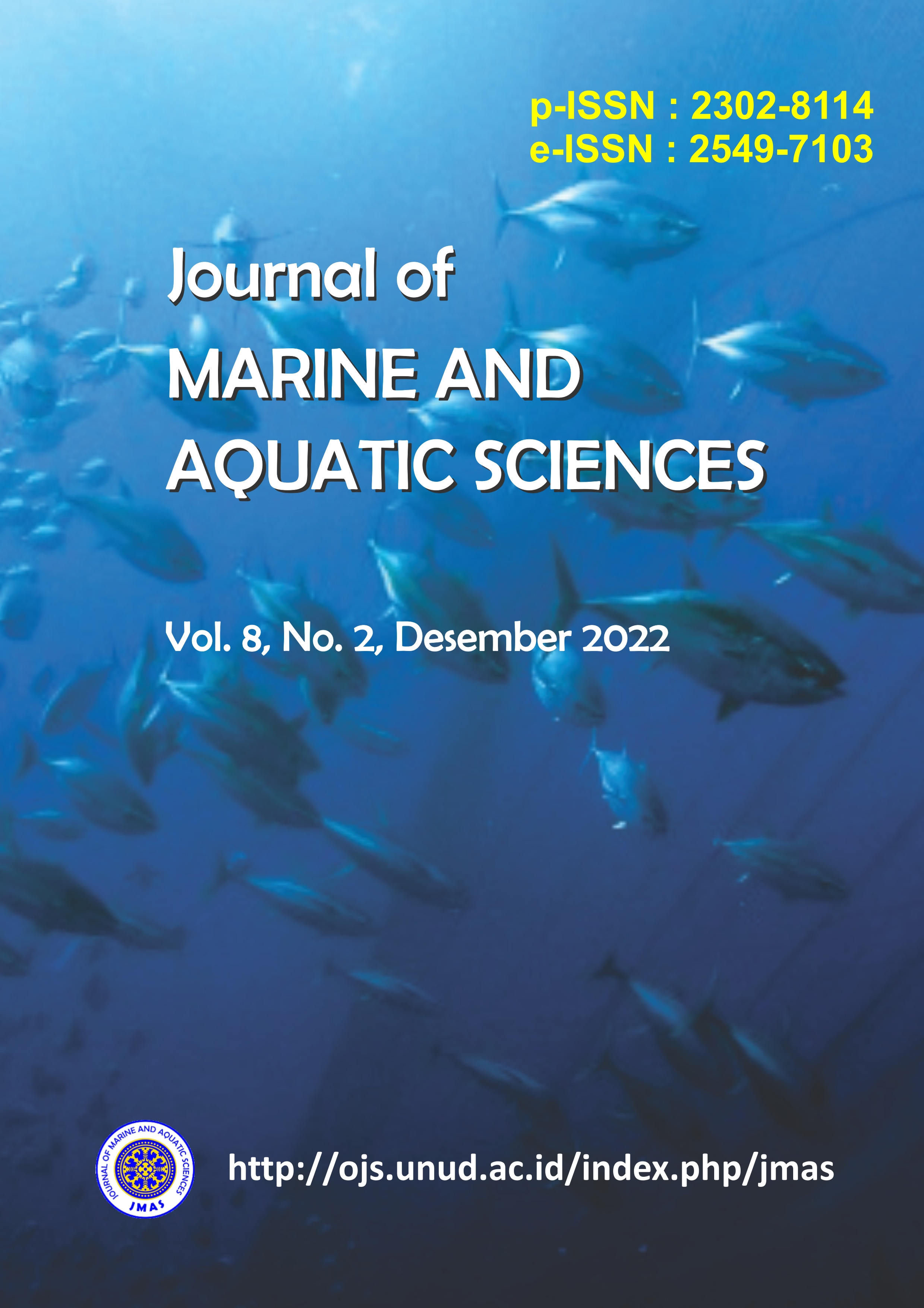Peringatan Dini Keberadaan Arsen (As) pada Air dan Sedimen di Hilir Sungai Tukad Badung, Bali
Abstract
Tukad Badung is a large river in Bali that crosses Denpasar City which is densely populated and has a variety of activities: household activities, agriculture, animal husbandry, hotels, hospitals and industry. These various activities result in the entry of various heavy metals into the river water, including Arsenic (As), which eventually settles in the sediment. Arsenic has high toxicity and is included in Endocrine Disrupting Chemicals (EDCs). Information related to the presence of Arsenic in waters and sediment is very necessary to prevent its negative impact on ecosystems and human health. This research method is descriptive. Arsenic was 0.769 mg/L at point I, was not detected at points II and III, while at point IV Arsenic was measured at 0.081 mg/L. Arsenic (As) at point I and IV exceeded the threshold set based on PP number 82 of 2001 concerning Water Quality Management and Water Pollution Control, because it measured > 0.05 mg/L. The content of Arsenic (As) in downstream river sediment Tukad Badung, taken at point IV, measured 22.895 mg/kg; this value has also exceeded the threshold.
Downloads

This work is licensed under a Creative Commons Attribution 3.0 International License.
Copyright 2012 - 2023 Journal of Marine and Aquatic Sciences (JMAS)
Published by Fakultas Kelautan dan Perikanan Universitas Udayana, Denpasar, Bali, Indonesia
JMAS (p-ISSN 2302-8114; e-ISSN 2549-7103)


